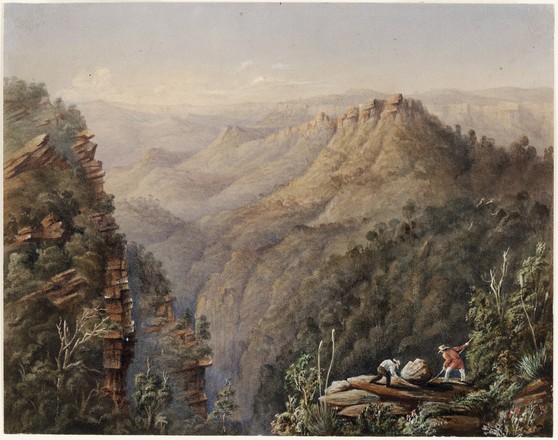
Waterfall on the road to Bathurst Oct 20 1851
DG SV1B / 11
Watercolour
Watercolour
During the 1850s-1860s, English-born etcher and illustrator Frederick Charles Terry (1825-1869) was known as one of the most accomplished artists in the colony. His carefully detailed watercolour paintings depicting Sydney’s life, landscapes and surrounds provide a fascinating historical record of the early days of the colony.
‘Waterfall on the road to Bathurst Oct [i.e. October]’ illustrates a view point on the Bathurst road, near a convict built station called the ‘Weather Board Inn.’ In this image, the artist depicts a gorge where the bushland was so dense, that Europeans believed ‘no man had ever walked [on the land] before.’ This virgin landscape is revealed in a golden light that’s diffused by a misty haze falling over the rugged cliffs and into the deep valleys.
Terry’s landscapes typically feature people, animals, birds and some form of activity.* Whether Terry actually ventured into the Blue Mountains is unknown; however the comparatively accurate depiction of the Mountain’s suggests that that they were painted from life.
Footnotes
http://adb.anu.edu.au/biography/terry-frederick-casemero-4701


 Back to list
Back to list